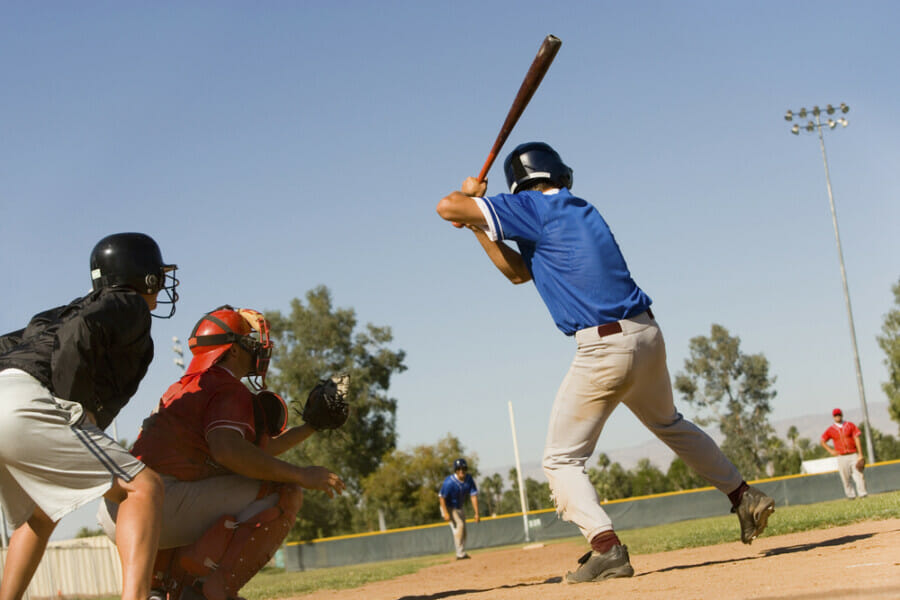A Comprehensive Guide To Mastering The Baseball Catcher Position
The catcher position in baseball is considered one of the toughest defensive roles due to its physical demands and the need for a strong connection with the pitcher.
Observation
Mastering catching requires a combination of physical strength, mental sharpness, and dedicated practice.
Observation is a vital skill for catchers as it helps them analyze the pitcher’s throws and respond effectively.
By mastering observation, catchers can predict the type and location of pitches, enabling them to frame them skillfully.
To improve their framing technique, catchers can watch game footage and practice with tennis balls to enhance their body positioning and movement while catching.
Setup
Becoming proficient in the catcher position demands fielding various pitches and possessing a strong throwing arm akin to professional catcher Francisco Cervelli.
Working closely with different pitchers allows catchers to understand their strengths and weaknesses, preparing them for diverse game situations.
Understanding the pitcher’s tendencies helps catchers position themselves optimally to catch a wider range of pitches effectively.
Throwing
A catcher’s throwing ability holds immense significance in baseball, often prioritized for its power and accuracy.
To excel in throwing, catchers should focus on enhancing hand-eye coordination, reflexes, and baseball intelligence to react instinctively.
Maintaining the right stance with feet shoulder-width apart, positioning the mitt at the batter’s knee level, and keeping the throwing hand behind the mitt are essential for a strong throw while safeguarding against fouls and erratic pitches.
Blocking
Mastering the catcher position involves developing proficient blocking skills through consistent practice and repetition.
Catchers commonly use blocking drills during training sessions to refine their blocking technique, albeit these drills may not fully replicate game scenarios.
One effective dry-blocking drill involves placing three baseballs on the ground at intervals for catchers to practice blocking in succession upon a prompt, refining their confidence and efficiency.
Throwing To Bases
Effective throws to bases necessitate skill in transitioning the ball from glove to hand, gripping it securely, and executing accurate throws, all honed by experience and game exposure.
The ability to throw to bases is crucial for catchers as it enables them to make strategic plays like back-picking runners to secure defensive success.
Being prepared to block wild pitches and errant throws in the dirt is vital to impede runners’ advancement, especially during pitchers’ early count ball variations.
!function(f,b,e,v,n,t,s){if(f.fbq)return;n=f.fbq=function(){n.callMethod?
n.callMethod.apply(n,arguments):n.queue.push(arguments)};if(!f._fbq)f._fbq=n;
n.push=n;n.loaded=!0;n.version=’2.0′;n.queue=[];t=b.createElement(e);t.async=!0;
t.src=v;s=b.getElementsByTagName(e)[0];s.parentNode.insertBefore(t,s)}(window,
document,’script’,’//connect.facebook.net/en_US/fbevents.js’);
fbq(‘init’, ‘1659360370986360’);
fbq(‘track’, “PageView”);(function(d, s, id) {
var js, fjs = d.getElementsByTagName(s)[0];
if (d.getElementById(id)) return;
js = d.createElement(s); js.id = id;
js.src = “//connect.facebook.net/en_GB/sdk.js#xfbml=1&appId=1042187652488583&version=v2.3”;
fjs.parentNode.insertBefore(js, fjs);
}(document, ‘script’, ‘facebook-jssdk’));(function(d, s, id) {
var js, fjs = d.getElementsByTagName(s)[0];
if (d.getElementById(id)) return;
js = d.createElement(s); js.id = id;
js.src = “//connect.facebook.net/en_US/sdk.js#xfbml=1&version=v2.4&appId=221591494559091”;
fjs.parentNode.insertBefore(js, fjs);
}(document, ‘script’, ‘facebook-jssdk’));














